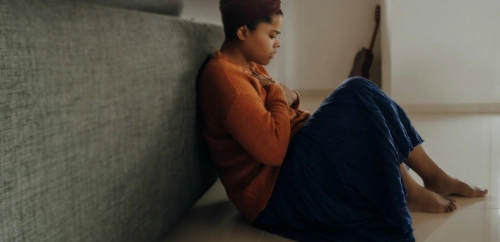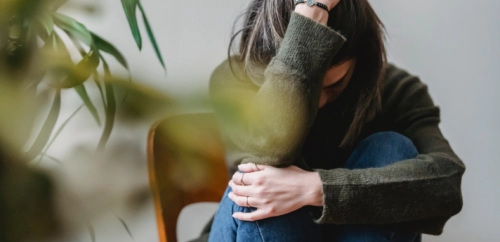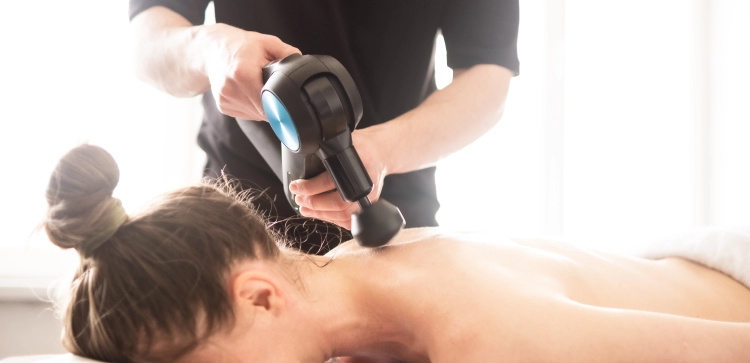Can Yoga Help With Anxiety?

If you asked 100 people in a room if they ever felt anxious in their everyday life, you would get a yes, a resounding 100% of the time! That’s because in our daily lives, we live such a fast-paced and hectic life that is inundated with constant sensory overload. This, in turn, activates areas of our brain that create hormones and other chemical compounds that are responsible for these feelings. One of the ways many people look to address this is by utilizing mindfulness practices like journaling and yoga.
Yoga utilizes breathing techniques to allow you to become more aware of your feelings and the sensations within your body. By becoming more in tune with that, you can then lessen anxiety and learn to handle situations in a more balanced manner.
To help you understand how yoga can affect your anxiety both physically and spiritually, we’re going to take an in-depth look at how yoga works, and the benefits, as well as give you some tips and poses that might help you build a more well-rounded yoga practice in regard to helping with your anxiety.
Can Yoga Help With Anxiety? How It Works And Some Benefits!
Before you can understand how yoga can help with your anxiety, you have to understand how it works and really take a close look at the benefits you get from incorporating a consistent yoga practice into your daily life.
Yoga is a practice that helps balance your mind and body to create a centered and calmer life experience. Because anxiety has to do with the internally built fight or flight mode, it acts oppositely to yoga.
Anxiety affects the sympathetic nervous system, which then sends signals to your body that there are dangers all around, and that in turn releases chemicals that are intended to help you react to those dangers.
This anxiety can cause a wealth of different issues, from physical to emotional to spiritual. Because yoga targets not only the physical body but focuses on breathing, it is looked at as a meditative exercise practice.
When you are executing yoga, you will see that because of the increased awareness of your body and emotions within it, you will be able to effectively cut anxiety off at the pass and deal with the root causes before they get out of hand.
The increased focus on breath will also bring more oxygen into your body, which will help with the flow of your circulatory system. All of this means that mentally and physically yoga will have an effect on how your brain responds to internal as well as external triggers, and this in turn will help reduce your anxiety.
Anxiety & Yoga: Poses That Help
Now that we have looked at how yoga can help with anxiety and the benefits that come from it, you may be wondering if there are specific yoga poses that are designed to help with anxiety.
There are a wealth of different types of yoga poses and depending on the yoga style you choose, you will have access to any number of them. That being said, there are a few poses that can specifically help with anxiety that we think you should be aware of.
Here are a few of those poses:
Camel
This pose can help with anxiety because it aims to improve the circulation of blood through the body and this, in turn, can release stress. By improving that circulation, more oxygen is going to get to your brain and throughout your body, and that will help greatly with all forms of anxiety.
Bridge
This pose is designed to open up the heart and front of the spine, which is a movement that tends to help calm your mind and decrease stress levels. This is mostly due to the fact that it improves blood circulation, just like the previous pose.
Butterfly
Maybe one of the most simple and standard poses in yoga is the butterfly pose. This is where you sit with your feet connected and your inner thighs and groin stretched into a sitting position. By sitting with your back completely straight, there is an alignment of the chakras, and this can help relieve tension and create a more calm attitude.
Seated Forward Bend
This yoga position extends the legs and spine and has you taking deep breaths while doing it. The deep breaths, of course, are going to help bring in more oxygen but also relieve some of the stress and the tension in the muscles.
Cat-Cow
There are so many points in our bodies where we retain tension, but one of the biggest is in our spine. This position will help release tension in that area and also help with improved flexibility.
Tips for Creating A Good Yoga Practice
Understanding that you can easily use yoga to help with anxiety is one thing. But if you’re new to the practice, you may not even understand where to start. So we thought we’d put together a few quick tips for creating a good yoga practice that should have you on the right track to less anxiety in your life.
Develop A Routine, Build A Habit
Anxiety may enter your life every day. So if you want to utilize yoga to help with your anxiety, you’re going to want to develop a routine in order to build a habit. By setting aside time and doing the same practice, you will be able to create consistency, and this will help you build a good yoga practice.
Get In Touch With Your Body
There are a plethora of different yoga practices and within those, there are several different poses. Each of these poses does have a more advanced option, but that doesn’t mean you always have to take them.
You have to know your body! If you are trying to execute a pose, and it doesn’t feel comfortable, you can always modify it. It is not so much always about executing the poses exactly the way they’re being shown, but rather by the way your body feels it is necessary.
Focus On You
You have to focus on what is right for you. Just because someone utilizes one form of yoga and touts the benefits, it doesn’t mean that is the yoga that is right for you. You have to really focus on yourself. From your mind to your spirit to your body, everything about your yoga practice has to work for you.
Set Intentions
Setting intentions is a big part of any type of mindfulness practice period, and though yoga is not necessarily a mindfulness practice, it is often part of the process. So just like with any other thing, setting your intentions before each session is key.
Talk to yourself about why you’re doing this practice, what’s been going on, and what you feel in the moment. By setting these intentions and focusing on them, you can really manage to keep your yoga practice consistent and therefore take advantage of all the benefits it brings with it.
Final Thoughts
So yes, yoga can be used to relieve anxiety. With consistent practice and choosing the right poses, you can balance your body’s energies easily. Because of yoga’s focus on breathing and stretching of the muscles, it not only helps oxygenate your blood more, permitting better circulation, but it also releases tension in those muscles.
This can be a great benefit when dealing with anxiety, as most of the time anxiety is kept within those muscles. So, releasing them through the use of yoga can lead to a happier and healthier life with less anxiety and stress.














